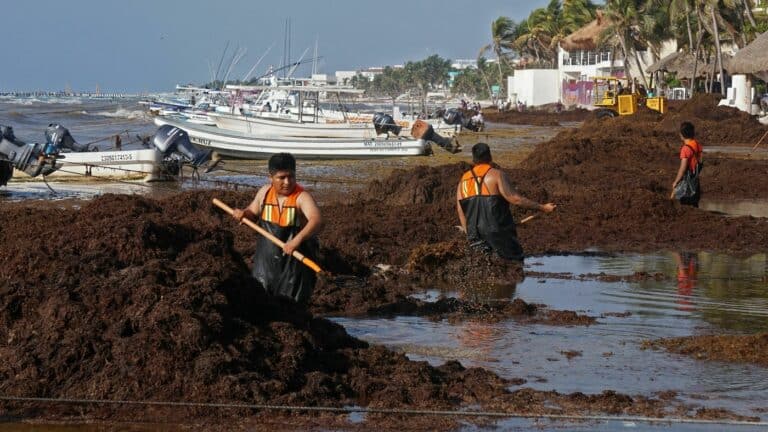Photo: People remove Sargassum in Playa del Carmen, Mexico, in April, 2022. Researchers expect this year will bring another massive bloom, choking local ecosystems and tourism economies. Elizabeth Ruiz/AFP via Getty Images
It stretches over 5,000 miles. It weighs over 10 million tons. And it’s circling around the Gulf of Mexico and the mid-Atlantic, where the right combination of currents and wind could push it ashore.
If you haven’t heard of the great Atlantic sargassum belt, or even if you have, chances are high that you’ll see it pop into your news feed at least once this summer. After a decade of record-breaking blooms, 2023’s sargassum mass is again shaping up to cause headaches (literally and figuratively) for beachside towns and tourists.
Here’s what you need to know.
What exactly is the sargassum belt?
Sargassum is a type of leafy, rootless and buoyant algae that bunch up in islands and floats around the ocean.
In the open sea, healthy patches of sargassum can soak up carbon dioxide and serve as a critical habitat for fish, crabs, shrimp, turtles and birds.
But if sargassum moves closer to the coast, the seaweed can wreak havoc on local ecosystems, smothering coral reefs and altering the water’s pH balance. Once ashore, clumps of sargassum can choke local economies by closing tourism sites, cutting off marinas and constricting fishing yields.
Sargassum begins to rot after […]
Full article: Meet the sargassum belt, a 5,000-mile-long snake of seaweed circling Florida

